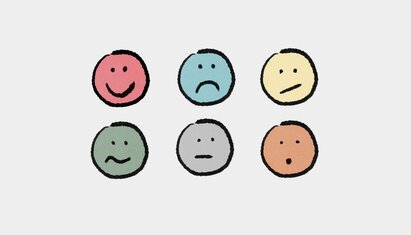Feelings wheel for adults PDF

Published January 31, 2025

If you’re looking for a cycle of anger fact sheet to share with clients in therapy, you’ve come to the right place.
This article includes an easy-to-understand guide on the circle of anger so that clients can recognize their triggers and learn ways to manage their emotions.
Anger is a powerful emotion that, if left unchecked, can strain relationships, affect mental health, and lead to life-altering decisions. Some people come to therapy because they feel stuck in a cycle of anger—they experience outbursts, regret, and feel like they can’t break free.
The first step is to help clients understand that anger is a response to something deeper. You can download a free cycle of anger fact sheet provided in this article and save it to your electronic health record (EHR) to assist clients in building self-awareness.
The cycle of anger refers to a recurring pattern of emotional and behavioral responses that perpetuate feelings of anger and its consequences.
The circle of anger usually follows this pattern:
Triggers for the cycle of anger can vary among clients, but common triggers include high levels of stress from work, daily pressures, feeling judged or misunderstood, unfair treatment, hunger or a lack of sleep, and unmet expectations.
When someone becomes angry, their thoughts can become distorted. This could lead them to think in exaggerated or unbalanced ways. Such thoughts are not necessarily based on the reality of the situation, but rather on how the person perceives it through the lens of their anger. Examples are “People always treat me this way” and “They’re disrespecting me on purpose.”
The cycle of anger manifests through physiological changes like a racing heart, muscle tension, or feeling “on edge.” Physical signs of tension often appear in the form of clenched teeth or fists, which is the body’s way of “defending” itself. A client’s breathing can also become quick and shallow.
These responses can vary from person to person, but common behaviors include making threatening comments, cursing, shouting, making backhanded comments (passive-aggressiveness), or even blaming others for how they’re feeling.
The circle of anger includes a consequence, which can make the person feel bad about their actions. This may lead to self-blame or feelings of shame. Damaged relationships can fuel further feelings of anger, which perpetuates the cycle of anger.
Research shows that anger can be influenced by both innate biological factors and life experiences.
Babies can start feeling anger as early as their first two years, which suggests that anger has a biological basis. However, how we show and manage anger is influenced by the social and cultural environment around us.
Moreover, people who feel angry focus excessively on things that make them angry, which makes their emotions stronger. This means that anger can be influenced by learned behaviors, particularly through social interactions and personal experiences.
For example, clients who grew up in households where anger was expressed aggressively may have learned to mirror these behaviors. Conversely, those raised in environments where anger was suppressed might struggle to acknowledge or express it constructively.
Therapists can help clients rethink their relationship with anger by exploring where it comes from. Questions like, “What did you learn about anger when you were growing up?” or “How did your family deal with conflict?” can help uncover patterns.
The anger as a secondary emotion PDF includes questions like these to help clients connect their past experiences with their current behaviors.
Breaking free from the aggression cycle requires intentional strategies that address each stage. Entering therapy is an important first step, as it provides clients access to a safe space to reflect and discover healthier ways to cope.
Here are some approaches to consider to break the circle of anger:
It’s difficult for a client to make a good decision when they’re overwhelmed by anger. Help them recognize when they’re starting to feel irritated, so they can take proactive steps to manage their emotions before they escalate and perpetuate a circle of anger. Self-awareness is the foundation for change.
Changing the way you think breaks the anger cycle. Often, anger is accompanied by negative or distorted thoughts, such as jumping to conclusions, blaming others, or thinking in extremes.
Help clients ask themselves questions like, “Is this thought realistic?” or “What evidence do I have for this?” Such questions allow them to see that their interpretations may not always be accurate or helpful.
When working with clients to explore alternative responses to anger triggers and stop the cycle of anger, the goal is to help them develop healthier ways to handle their emotions instead of reacting impulsively.
This means teaching them:
When helping clients work through different anger cycle stages, remember that change takes time, practice, and patience. Let them reflect on what strategies worked, what didn’t, and why.
SimplePractice is HIPAA-compliant practice management software with everything you need to run your practice built into the platform—from booking and scheduling to insurance and client billing.
If you’ve been considering switching to an EHR system, SimplePractice empowers you to streamline appointment bookings, reminders, and rescheduling and simplify the billing and coding process—so you get more time for the things that matter most to you.
Try SimplePractice free for 30 days. No credit card required.
Proudly made in Santa Monica, CA © 2025 SimplePractice, LLC
Proudly made in Santa Monica, CA © 2025
SimplePractice, LLC